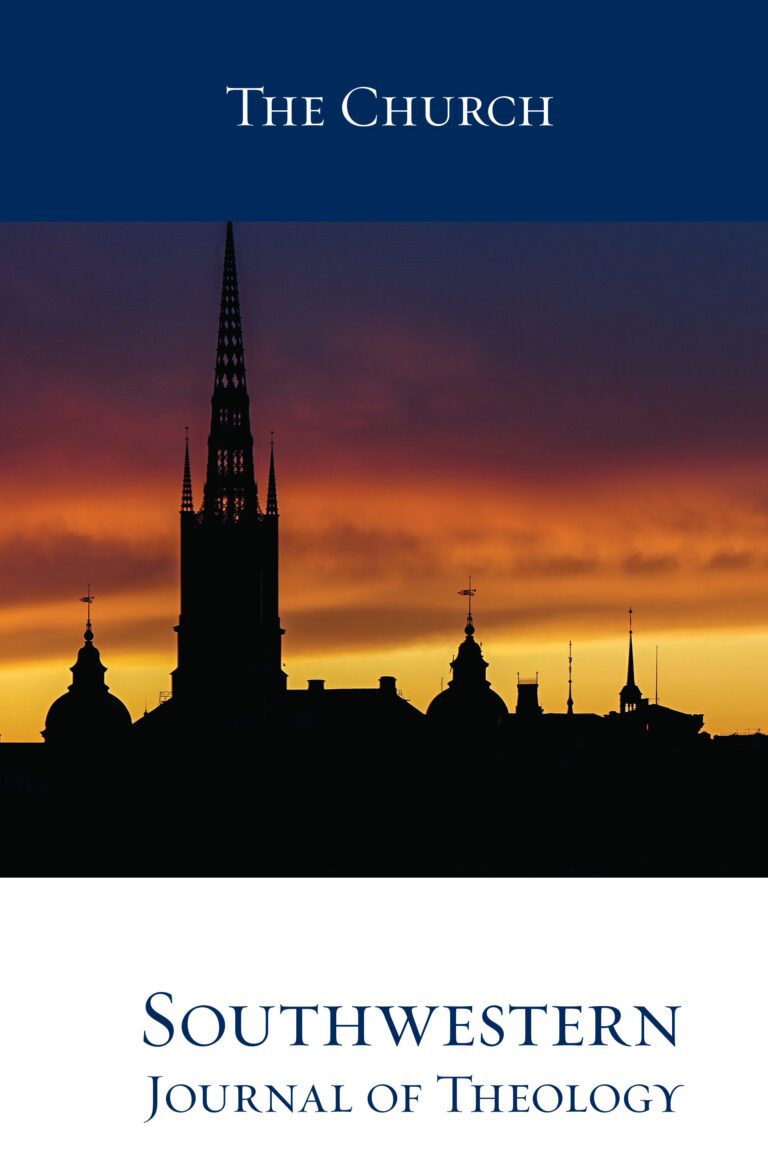
The Church
Southwestern Journal of Theology
Volume 61, No. 1 – Fall 2018
Editor: W. Madison Grace II
Edited by Nathan A. Finn and Jeremy M. Kimble. Wheaton, IL: Crossway, 2017. 240 pages. Paperback, $21.99.
Building on an ever-increasing volume of literature on the eighteenth-century theologian, this volume is an introductory guide to the major writings of Jonathan Edwards. While other books have written about his life, systematized his theology, or chronicled the pastor’s legacy, this book provides detailed analysis of his principle written works. The book orients the reader to each work’s historical context, basic contents, and theological legacy. Each chapter on the major works ends with a point of contemporary application.
This volume is edited by Nathan Finn and Jeremy Kimble. Finn currently serves as Provost and Dean of the University Faculty at North Greenville University in Tigerville, SC. At the time of publication, he served as Dean of the School of Theology and Missions and professor of theological studies at Union University in Jackson, Tennessee. Kimble is assistant professor of theological studies at Cedarville University in Cedarville, Ohio. Together, they have assembled an impressive group of contributors from a variety of backgrounds and institutions.
The work begins with an introduction from the editors. They explain the purpose of this work is “to bridge the gap between the work of scholars and the interests of general readers, especially pastors and ministerial students” (18). The major writings of Edwards include those that were popular during his lifetime, as well as works published posthumously which influenced later generations of missionaries, scholars, pastors, and laypeople. The book is organized by an initial chapter on how to read Edwards, followed by nine chapters dedicated to Edwards’s major writings, and finally an appendix on John Piper’s personal encounter with Edwards.
The first chapter, written by Dane Ortlund, will be the most helpful to the reader who does not have direct experience with reading Edwards. But before he offers a view on how to read Edwards, he offers an apology on why to read Edwards. Why would today’s busy pastors and seminarians have any interest in reading this eighteenth century Puritan preacher? What are the benefits of engaging with his writings? In sum, Edwards ushers the reader into the presence of God. This chapter sees reading Edwards as a journey that is both theologically rigorous and devotionally stimulating.
In chapter two, Finn looks at Edwards’s autobiographical writings. These important texts provide a look into the inner thought life of the eminent pastor. Immediately, the reader is directly introduced to the personal spiritual life of Edwards. Starting with Edwards’s private reflections is helpful because it connects the reader to the heart of the pastor. Chapter three, written by Jeremy Kimble, analyzes Edwards’s revival writings. These works constitute the works most widely read by non-specialists. These writings outline Edwards’s theology of revival, salvation, and the church. The fourth chapter analyzes Edwards’s Justification by Faith Alone. Michael McClenahan guides the reader through a key soteriological debate in the eighteenth century. In these debates, Edwards shows his skill, not only as a constructive theologian, but also as a polemicist. Arguing against Arminian doctrine, Edwards presents a sophisticated account of Reformed theology. McClenehan’s chapter is helpful because it introduces the reader to contemporary scholarly debates over Edwards’s teaching on justification. Gerald McDermott looks at Edward’s Religious Affections in chapter five. The work covers a variety of intellectual disciplines and proves to be a very helpful work for contemporary evaluations of revivals and individual piety. McDermott’s chapter helps the reader to understand and apply Edwards’s interpretation of spiritual revitalization for today. In chapter six, Rhys Bezzant presents The Life of David Brainerd. This chapter sheds light on the background to a popular work. The next two chapters, written by Joe Rigney and Robert Caldwell respectively, deal with some of the most philosophically sophisticated works by Edwards, Freedom of the Will and Original Sin. These tomes are technically challenging reads which defend a Reformed perspective. In chapter nine, Sean Michael Lucas introduces Edwards’s History of the Work of Redemption. This work is a sermon series delivered by Edwards from his Northampton pulpit. It is a biblical-theological work that Edwards hoped to be the foundation for a major work later to be published. Unfortunately, Edwards never completed that work due to his untimely death. Contemporary readers might find Edwards’s interpretations on history and eschatology strange, but Lucas helps in identifying key insights and applying them for today. Chapter ten is devoted to Edwards’s affectional ethics. Paul Helm outlines three of Edwards’s works to give a broad sketch of Edwards’s ethical writings. Finally, the reader is provided with an appendix, written by John Piper. It charts his personal encounter with Edwards. The appendix will be especially enlightening for those who are familiar with the preaching and writing of Piper. He shows how Edwards shaped his theology and encouraged him in his Christian walk.
This volume proves to be an outstanding introduction to Edwards’s major writings. It gives broad outlines to the contours of Edwards’s theology. Each author brings a unique and insightful contribution to the work. However, Rigney and Caldwell’s essays provide the most helpful essays to the book’s intended audience. The dense nature of those works prove to be difficult reading for the normal pastor and seminarian. Yet, their essays make Edwards’s prose much more accessible.





